ChatGPT:
Saint-Jean-Pied-de-Port is a picturesque town located in the French Basque Country, in the Pyrénées-Atlantiques department of southwestern France. Nestled at the foot of the Pyrenees, this town is a key starting point for the Camino de Santiago, specifically the French Way (Camino Francés). The town is known for its well-preserved medieval architecture, with narrow cobblestone streets, stone houses, and the imposing citadel that overlooks the town.
The Nive River runs through Saint-Jean-Pied-de-Port, adding to its charm. The town’s name translates to “Saint John at the foot of the pass,” reflecting its strategic location near the Roncevaux Pass, a historic route through the Pyrenees.
The town’s central street, Rue de la Citadelle, is lined with traditional Basque-style buildings and leads up to the Porte Saint-Jacques, a UNESCO World Heritage site that was historically part of the town’s defenses and now serves as an entry point for pilgrims heading to Santiago de Compostela.
Saint-Jean-Pied-de-Port is not only significant for its religious and cultural heritage but also for its vibrant local culture, which includes Basque cuisine, artisanal crafts, and regular markets. The town’s picturesque setting and historical significance make it a popular destination for both pilgrims and tourists alike.
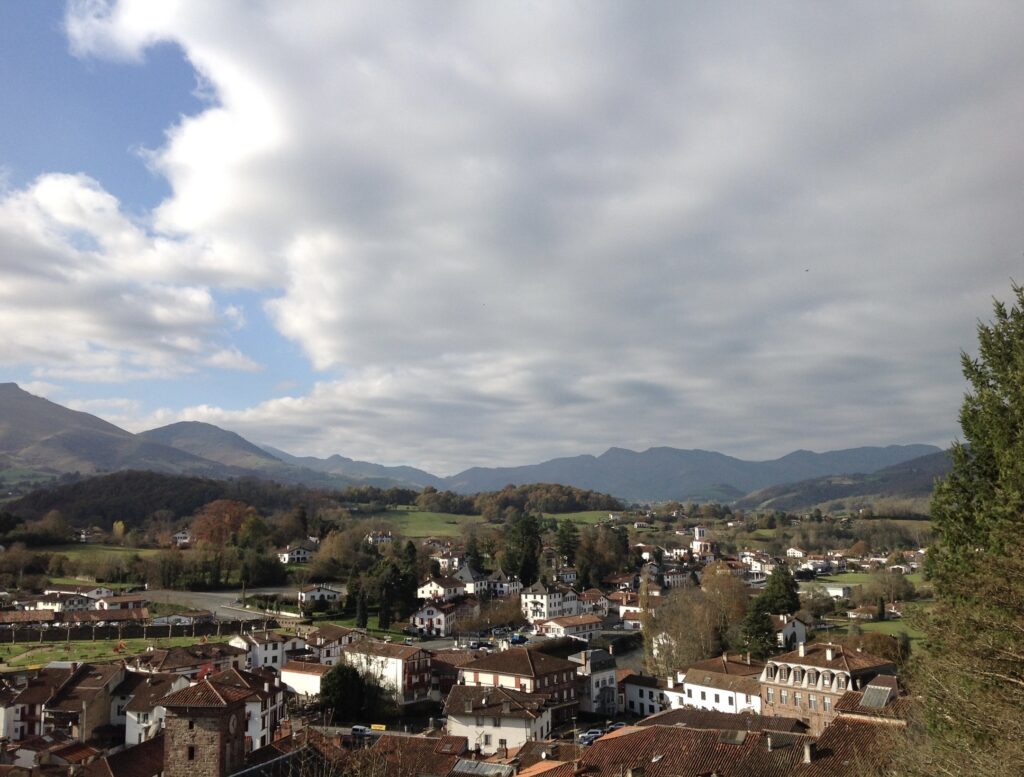

Saint-Jean-Pied-de-Port, with its roots deeply embedded in the history of the Basque Country and the pilgrimage routes to Santiago de Compostela, has a rich and fascinating past.
Origin and Early History
The town’s origin can be traced back to the Roman period when the area was part of the province of Novempopulania. However, it wasn’t until the medieval period that Saint-Jean-Pied-de-Port began to gain prominence. The town was founded around the 12th century, strategically positioned at the foot of the Pyrenees on the routes leading to the Roncevaux Pass (known as Puerto de Ibañeta in Spanish). This pass has been a vital crossing point between France and Spain since ancient times, making Saint-Jean-Pied-de-Port a critical stopover for traders, travelers, and, most notably, pilgrims on the Camino de Santiago.
Medieval Development
The town’s development was closely linked to its role in the pilgrimage to Santiago de Compostela. By the 12th century, it became an important stop for pilgrims traveling on the French Way (Camino Francés), one of the main routes to the tomb of Saint James in Santiago de Compostela. Saint-Jean-Pied-de-Port’s strategic location at the start of the final major leg of the pilgrimage made it a natural gathering place for pilgrims from across Europe.
In the 13th century, King Sancho VII of Navarre fortified the town, constructing a citadel and defensive walls to protect it from invaders. The citadel, perched on a hill overlooking the town, became a symbol of Saint-Jean-Pied-de-Port’s strategic importance and remains a prominent feature of the town today.
Renaissance and Modern Era
Over the centuries, Saint-Jean-Pied-de-Port continued to develop as a key commercial and military center, particularly under the Kingdom of Navarre, which controlled the region for much of its history. However, the town’s significance as a military outpost diminished after the annexation of Navarre by Spain in 1512 and the eventual integration of the town into the Kingdom of France in the 17th century.
During the 16th and 17th centuries, the town saw growth in trade and commerce, largely due to its location on the border with Spain and its continued role as a waypoint for pilgrims. The fortifications were strengthened under Louis XIII and later by Vauban, the famous French military engineer, ensuring the town’s defenses remained robust.
19th and 20th Century Changes
The 19th century brought changes with the decline of traditional pilgrimage routes due to the Enlightenment and the secularization of European society. However, the Camino de Santiago saw a revival in the late 20th century, leading to a renewed interest in Saint-Jean-Pied-de-Port as a starting point for the pilgrimage. This resurgence was partly driven by the declaration of the Camino as a UNESCO World Heritage Site in 1993 and the broader cultural renaissance of pilgrimage traditions in Europe.
The town also became a hub for Basque cultural identity, with its unique architecture, language, and customs being preserved and celebrated by its inhabitants.
Modern Development
Today, Saint-Jean-Pied-de-Port is a small, vibrant town that thrives on tourism, especially related to the Camino de Santiago. It has maintained much of its medieval character, with its narrow streets, stone buildings, and the citadel still dominating the skyline. The town is not only a historical and cultural treasure but also a living community that celebrates its Basque heritage through festivals, cuisine, and local traditions.
Its role as the traditional starting point for many pilgrims on the Camino Francés has also ensured its continued importance, with thousands of pilgrims passing through each year. The town has adapted to this influx by offering various services and accommodations tailored to the needs of modern pilgrims while preserving its historic charm.

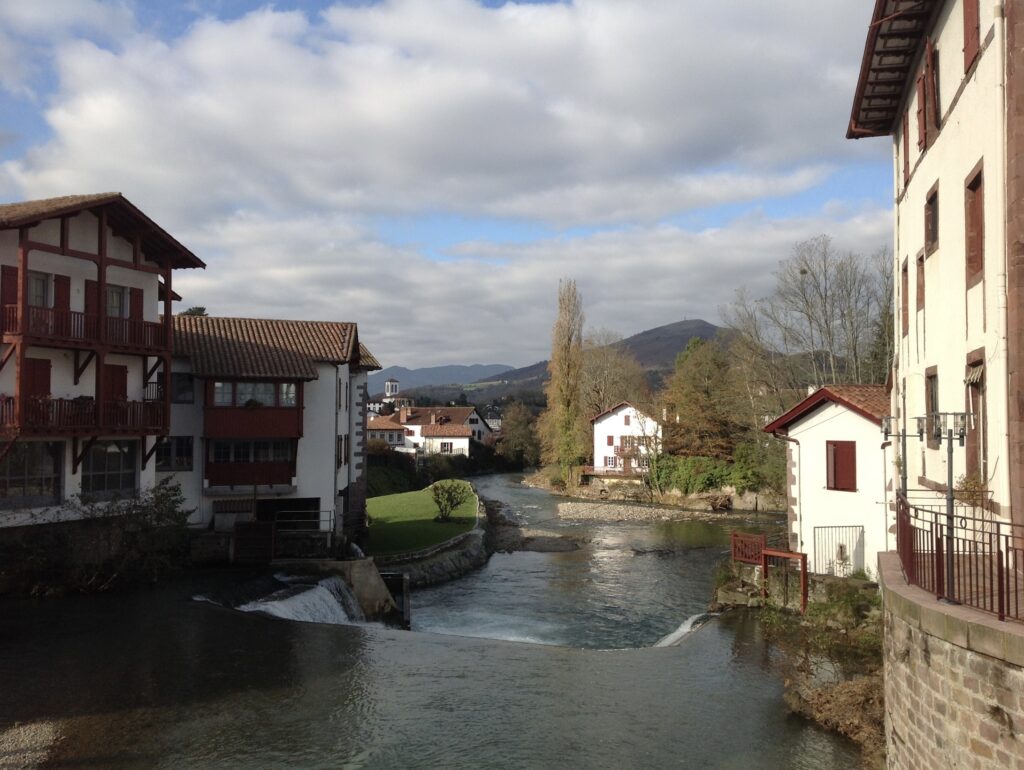
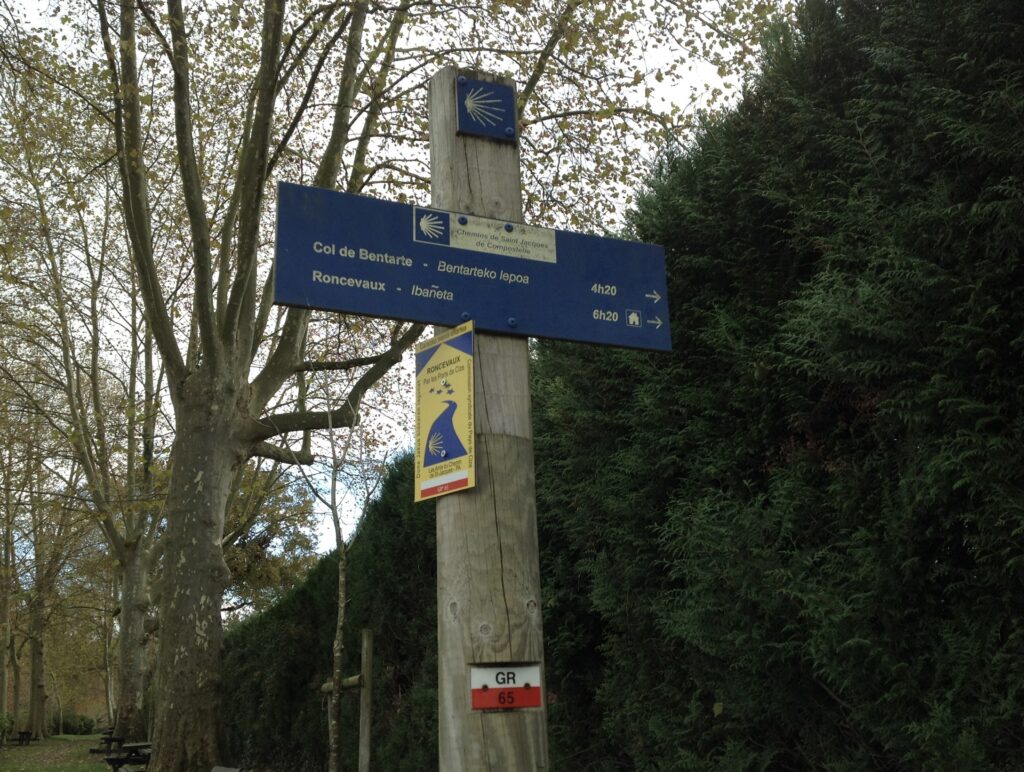
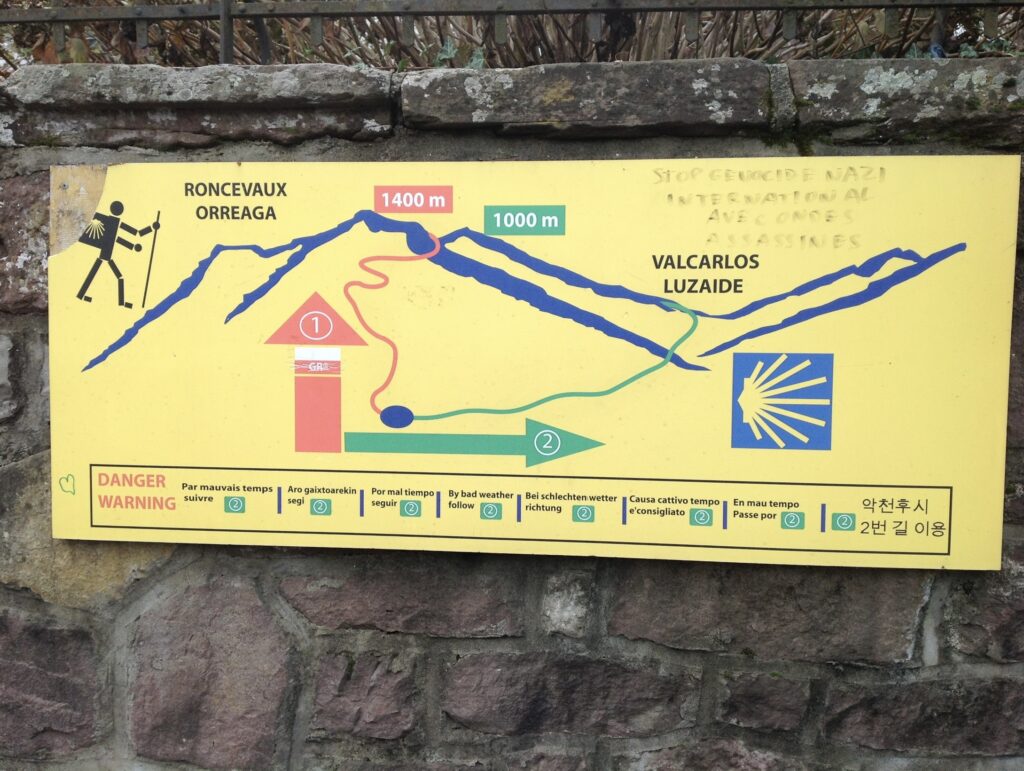
Saint-Jean-Pied-de-Port is rich in historical monuments and tourist attractions that reflect its medieval heritage and cultural significance. Here’s a list of some of the most notable sites:
1. The Citadel
- Description: Perched on a hill overlooking the town, the Citadel was originally built in the 13th century and later fortified in the 17th century by Vauban, the famous military engineer. It offers stunning panoramic views of the surrounding landscape and the town below.
- Significance: It serves as a reminder of the town’s strategic military importance and its role in the defense of the region.
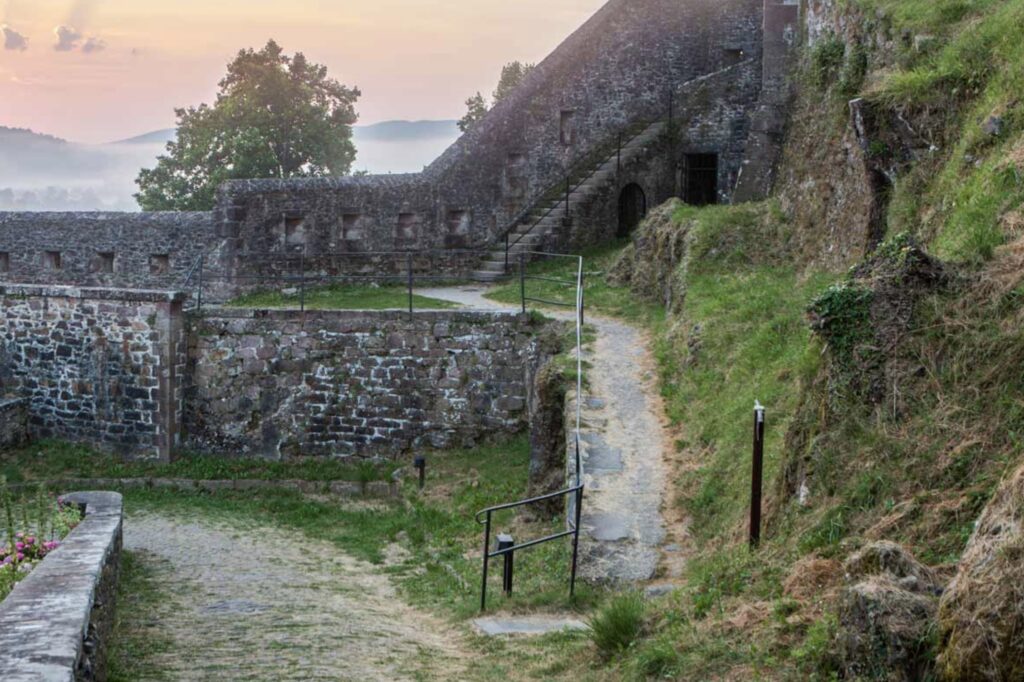
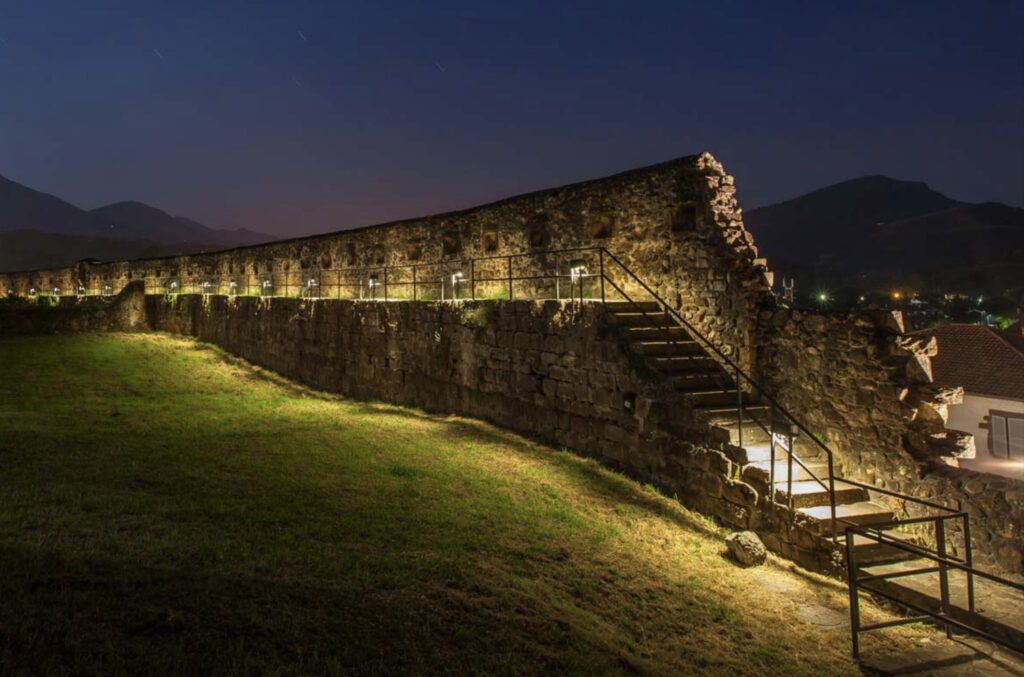
2. Porte Saint-Jacques
- Description: This impressive gate is part of the town’s medieval walls and is a UNESCO World Heritage site. It marks the traditional entry point for pilgrims heading towards Santiago de Compostela.
- Significance: It is a key historical landmark for pilgrims on the Camino de Santiago, symbolizing the start of the arduous journey across the Pyrenees.
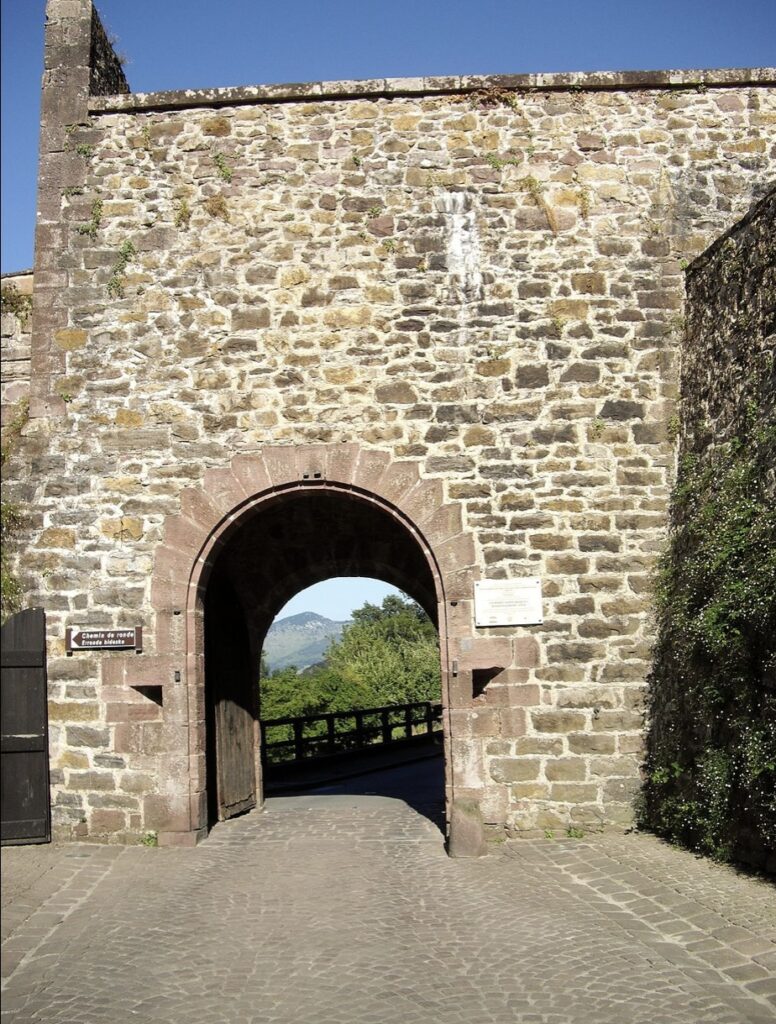
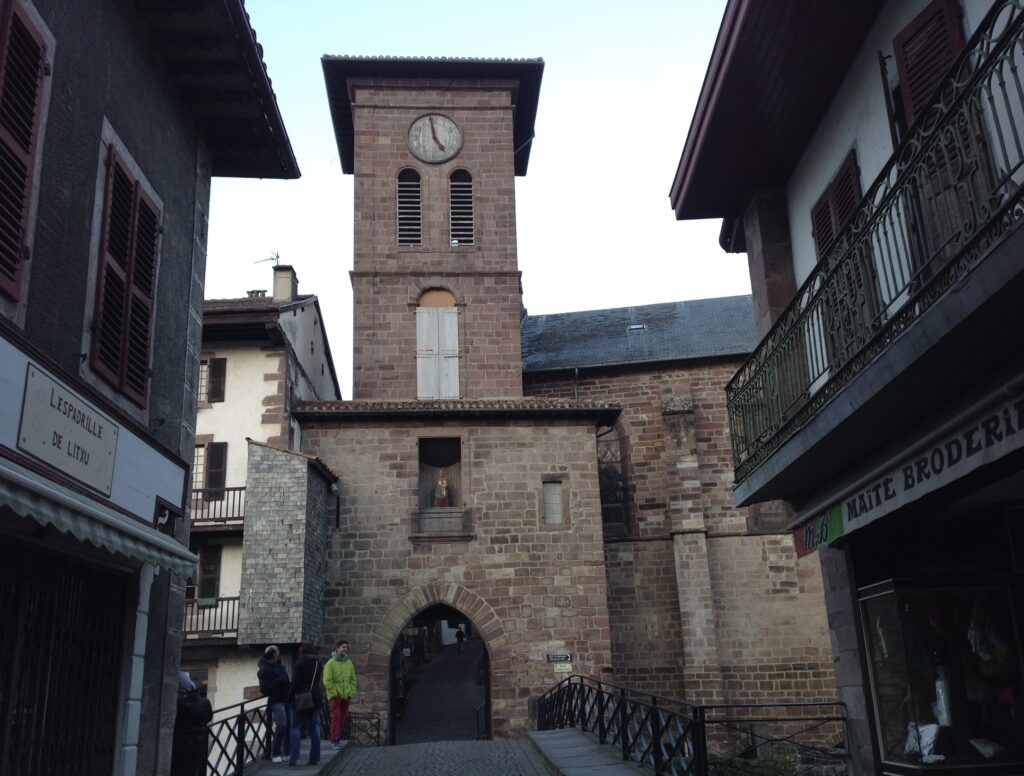
3. Church of Notre-Dame du Bout du Pont
- Description: This Gothic church, dating back to the 13th century, is located near the river at the entrance to the old town. It features a beautiful vaulted ceiling and a simple, serene interior.
- Significance: It is a spiritual center for pilgrims, where many start their Camino journey with a blessing or a moment of reflection.
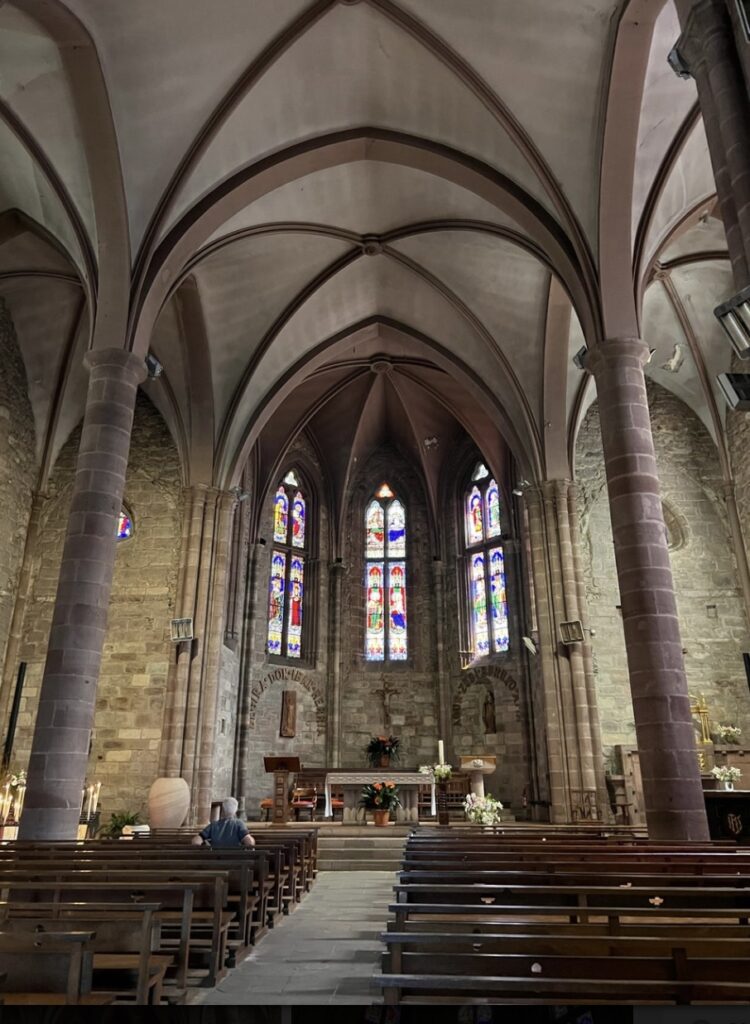
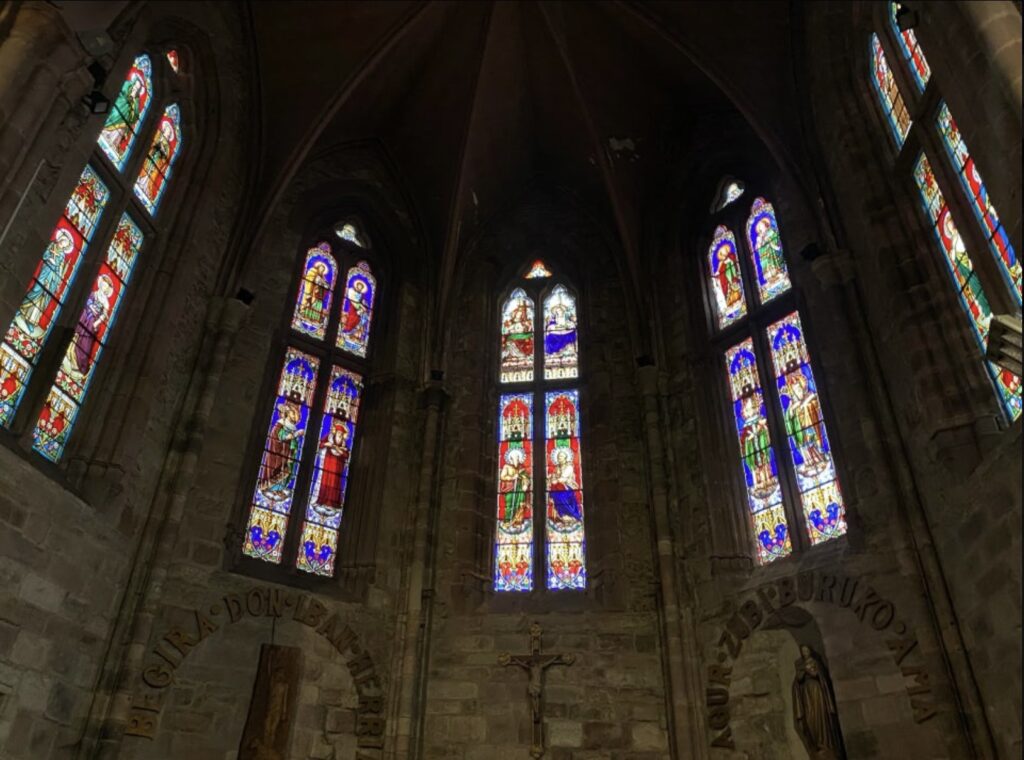
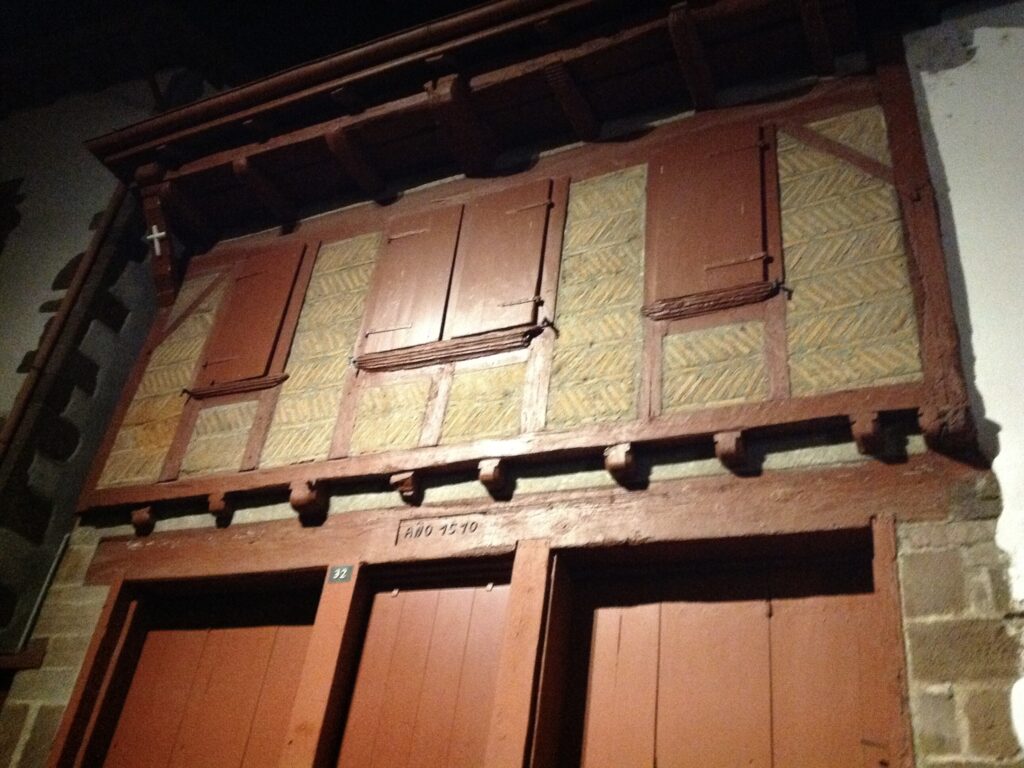
4. Rue de la Citadelle
- Description: The main street of the old town, lined with traditional Basque houses, shops, and cafés. The cobblestone street leads up to the Citadel and passes through the heart of Saint-Jean-Pied-de-Port.
- Significance: It offers a glimpse into the daily life and architecture of the town, with several historical buildings along the way.
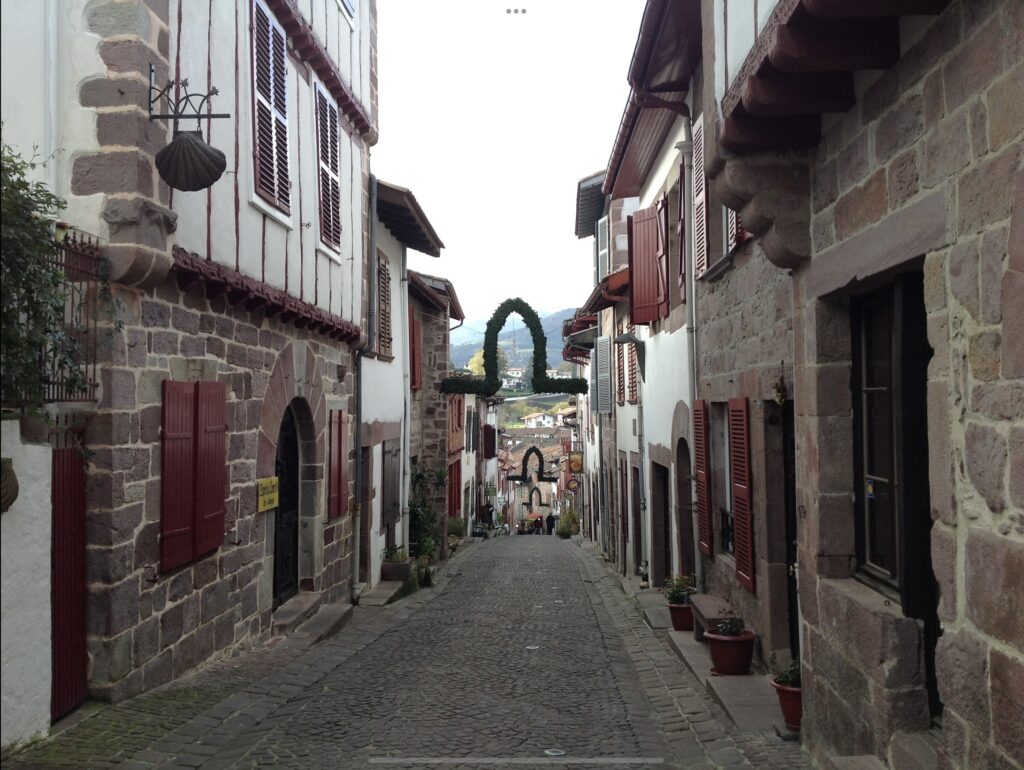
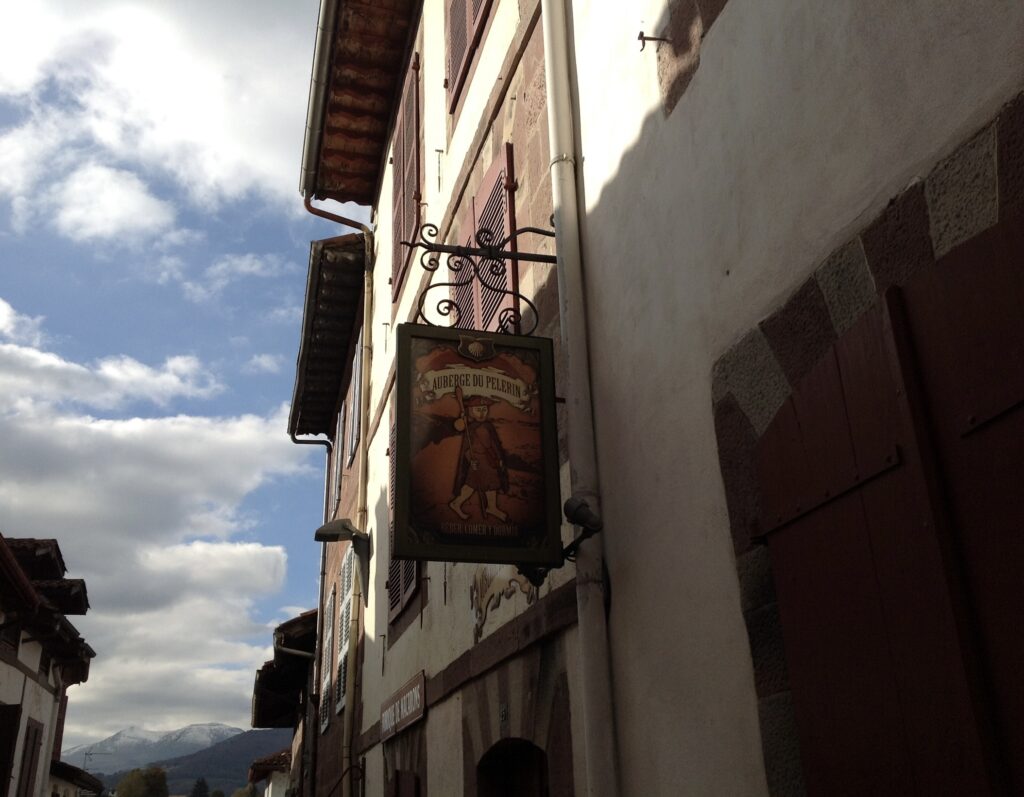
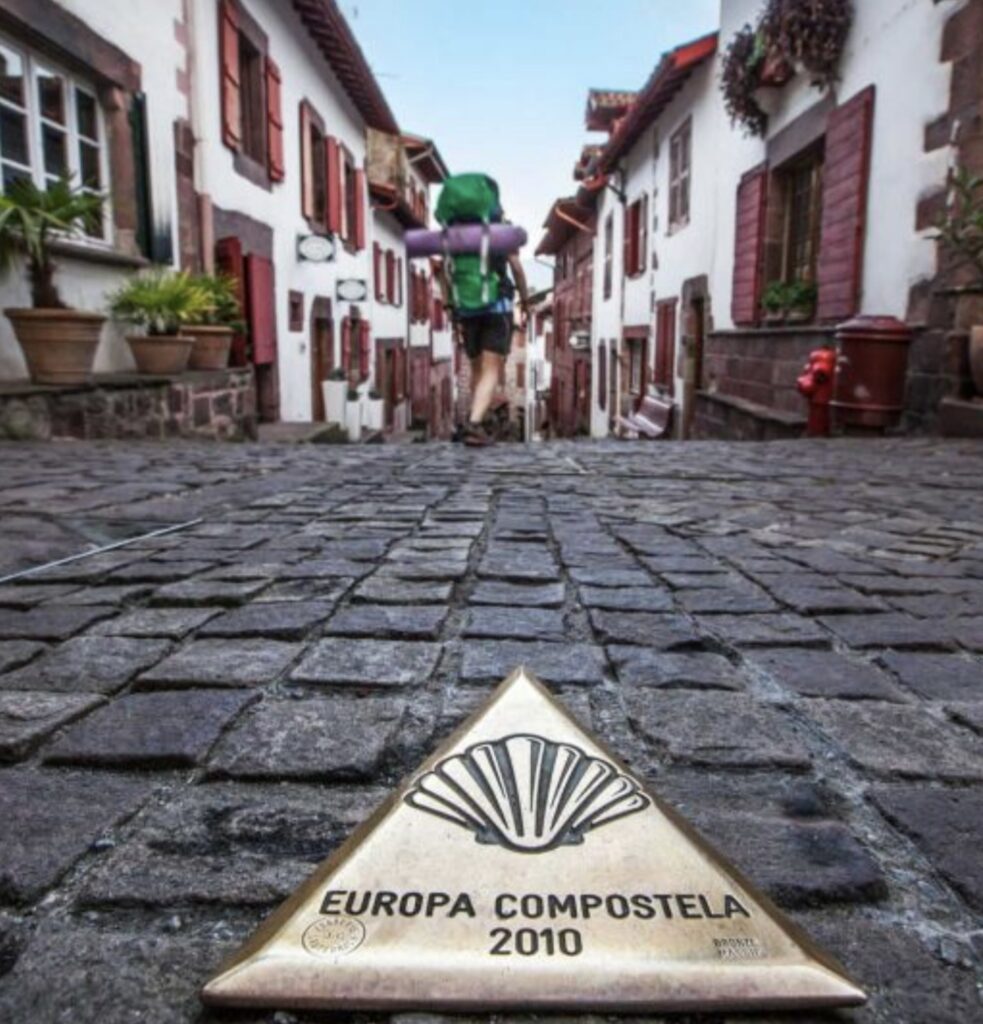
5. The Prison des Évêques (Bishop’s Prison)
- Description: This 13th-century building served as a prison for bishops and other clergy during the medieval period. It now houses a small museum detailing its history.
- Significance: The museum provides insights into the town’s ecclesiastical history and the role of the church in the region.
6. Nive River and Pont Romain (Roman Bridge)
- Description: The Nive River runs through the town, and the picturesque Roman Bridge crosses it, connecting the old town with the newer parts of Saint-Jean-Pied-de-Port.
- Significance: The bridge is a popular spot for photographs and offers a peaceful setting with views of the town and surrounding hills.

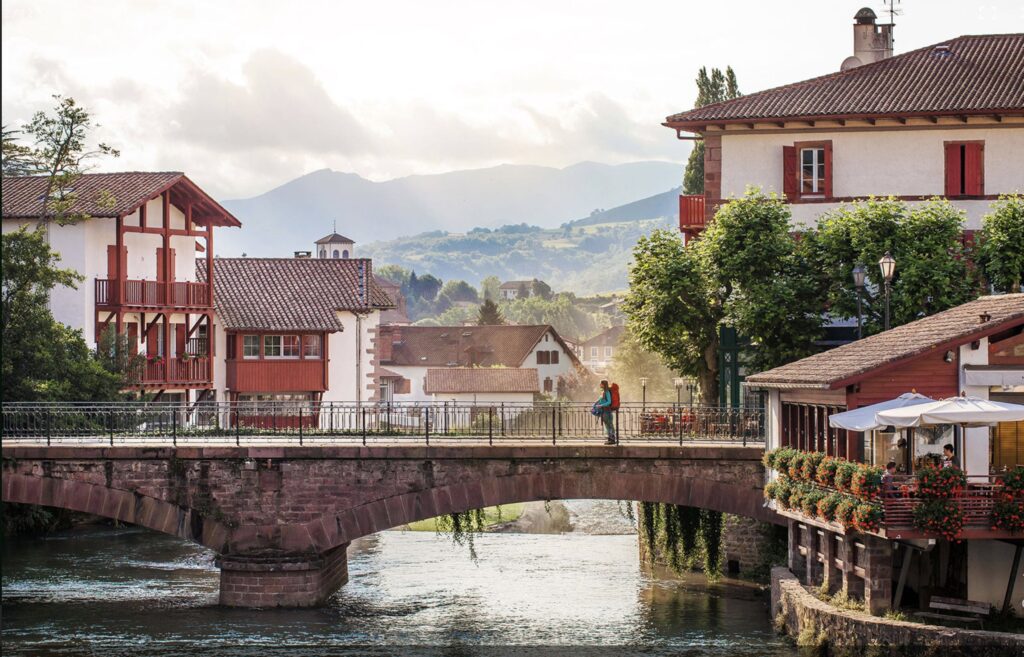
7. Espace Culturel Assantza
- Description: This cultural space showcases Basque culture and traditions through exhibitions, workshops, and performances.
- Significance: It’s an excellent place to learn more about the local Basque heritage, including music, dance, and crafts.
8. Maison de la Commanderie
- Description: A historic building that once served as a commandery for the Knights of the Order of Malta. Today, it hosts exhibitions related to the Camino de Santiago and the history of the Knights.
- Significance: It’s a significant site for understanding the town’s connection to the medieval pilgrimages and the military orders that protected pilgrims.
9. Market Square (Place Charles de Gaulle)
- Description: The central square of the town, where local markets are held, offering regional produce, Basque specialties, and artisanal goods.
- Significance: The square is a lively gathering place that reflects the local culture and serves as a hub for both locals and visitors.
10. The Basque Museum
- Description: Although not within the town itself, the Basque Museum in nearby Bayonne is a significant attraction for those interested in the broader context of Basque history and culture.
- Significance: It offers an in-depth exploration of Basque traditions, language, and heritage, complementing a visit to Saint-Jean-Pied-de-Port.
These sites together provide a comprehensive experience of Saint-Jean-Pied-de-Port’s rich history, cultural heritage, and its enduring significance as a pilgrimage destination.
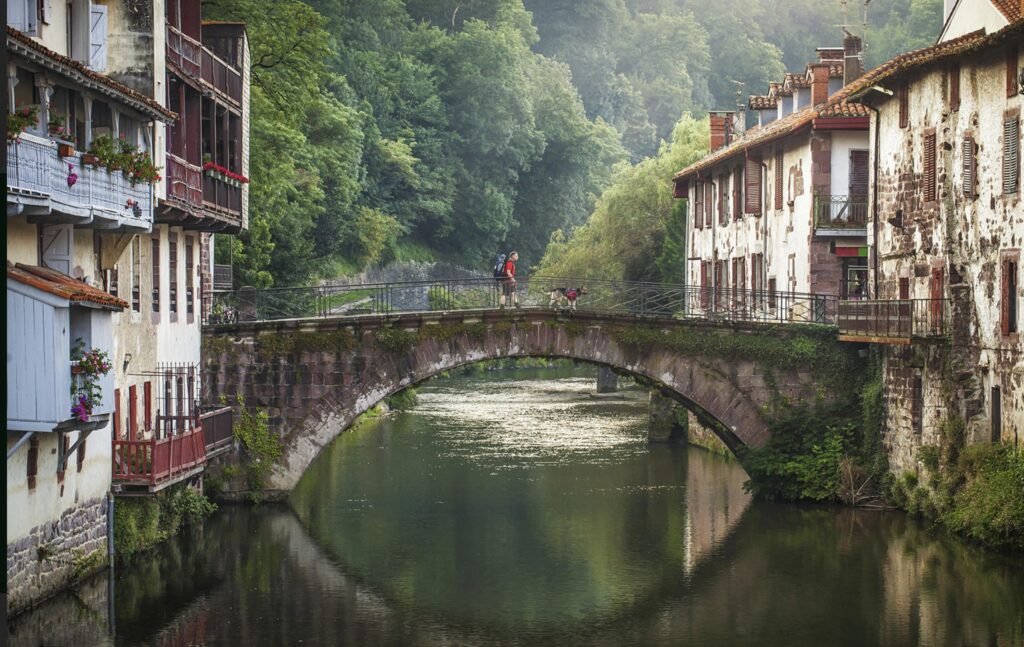
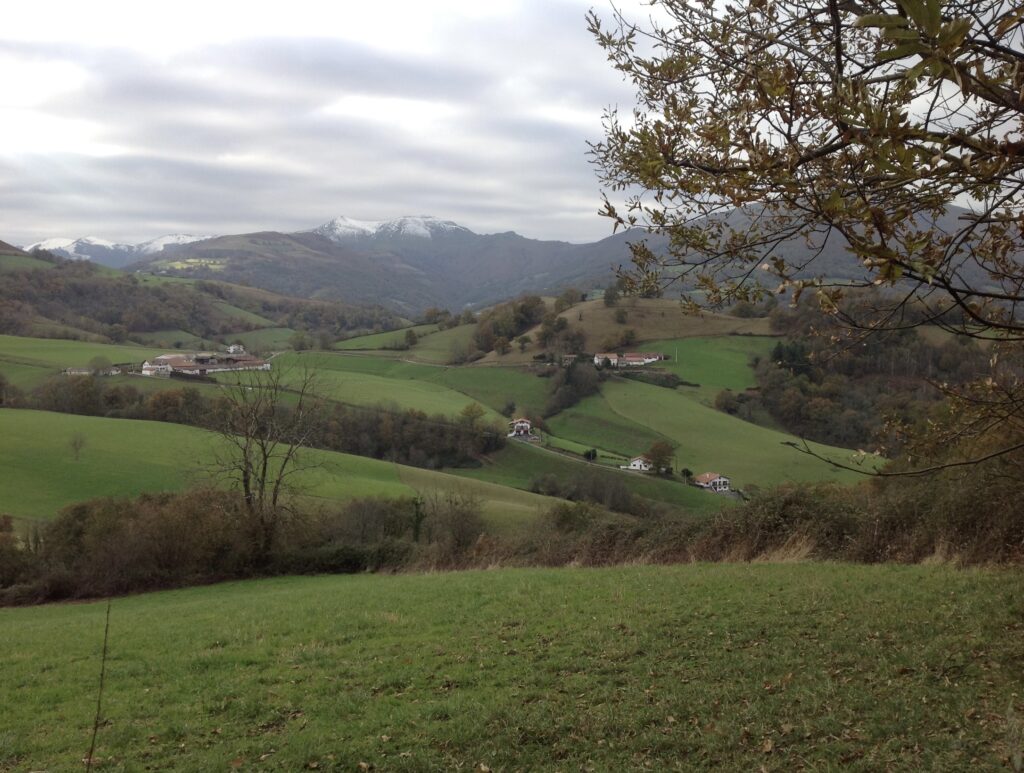
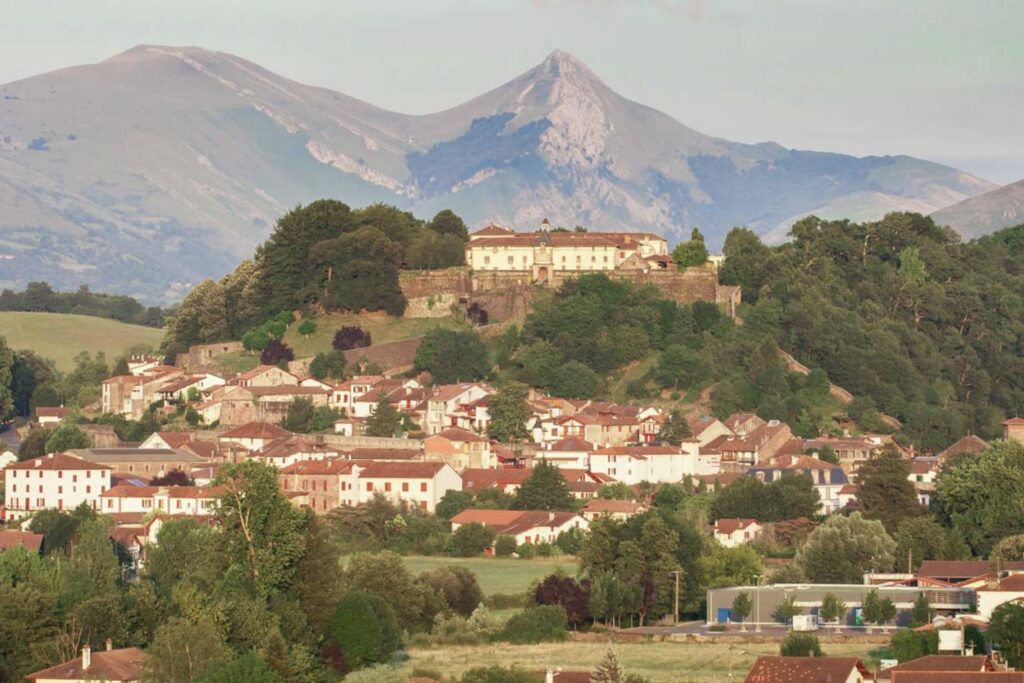
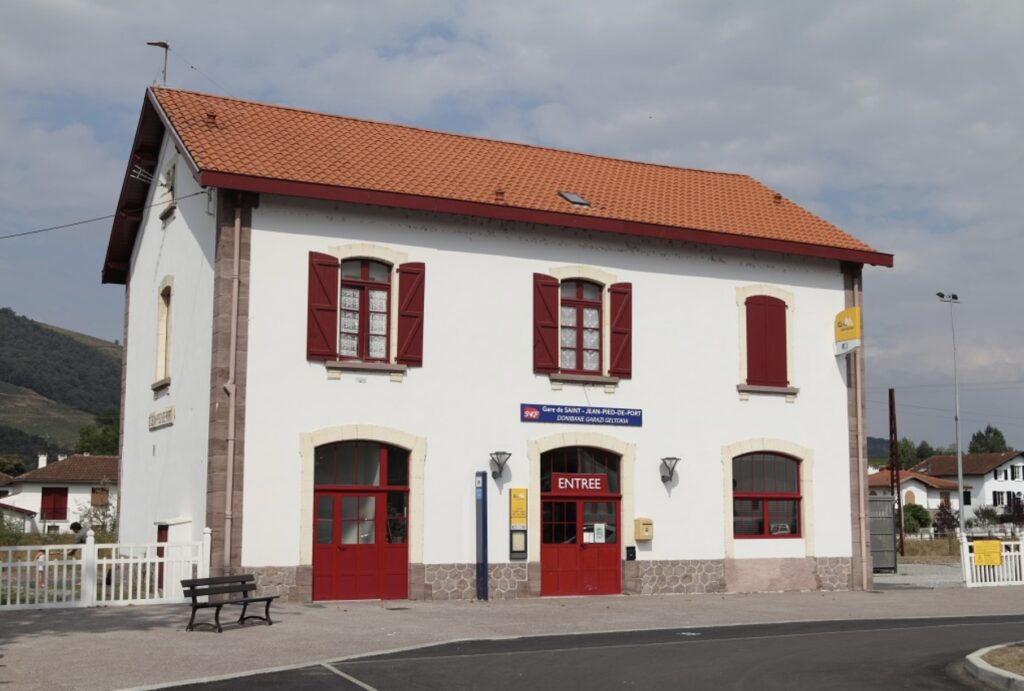
Here’s a one-day itinerary for visiting Saint-Jean-Pied-de-Port, designed to give you a comprehensive experience of the town’s historical, cultural, and scenic highlights.
Morning
- Start with Breakfast in the Old Town (8:00 AM – 9:00 AM)
- Begin your day with a traditional Basque breakfast at a café on Place Charles de Gaulle. Enjoy fresh croissants, local cheeses, and a cup of coffee while soaking in the ambiance of the town square.
- Visit the Citadel (9:00 AM – 10:00 AM)
- After breakfast, head up to the Citadel. Walk through the narrow, cobblestone streets of Rue de la Citadelle to reach the entrance. Explore the fortifications, learn about the town’s military history, and take in panoramic views of Saint-Jean-Pied-de-Port and the surrounding Pyrenees.
- Explore Rue de la Citadelle (10:00 AM – 11:00 AM)
- Stroll down Rue de la Citadelle, the main street of the old town. Along the way, visit charming shops selling local Basque products such as espadrilles, piment d’Espelette, and regional wines. Don’t forget to stop at the Maison de la Commanderie, which offers insights into the town’s history and its connection to the Camino de Santiago.
- Visit the Church of Notre-Dame du Bout du Pont (11:00 AM – 11:30 AM)
- Continue your walk to the Church of Notre-Dame du Bout du Pont. Take a moment to admire the Gothic architecture and the serene interior. This church is a key spiritual site for pilgrims starting their journey on the Camino.
- Walk Across the Roman Bridge (Pont Romain) (11:30 AM – 12:00 PM)
- After visiting the church, cross the Pont Romain over the Nive River. This picturesque bridge offers a perfect spot for photographs, with the river and old town in the background.
Midday
- Lunch at a Local Basque Restaurant (12:00 PM – 1:30 PM)
- For lunch, enjoy Basque cuisine at one of the town’s traditional restaurants. Consider dishes like axoa (a spicy veal stew), piperade (a pepper and tomato dish), or gâteau Basque (a traditional Basque cake) for dessert. Restaurant Les Pyrénées or Café Ttipia are excellent choices.
Afternoon
- Visit the Prison des Évêques (1:30 PM – 2:15 PM)
- After lunch, explore the Prison des Évêques. This historic prison, now a small museum, offers a fascinating glimpse into the town’s past and its connection to the church and medieval justice.
- Walk the Town Walls and Visit Porte Saint-Jacques (2:15 PM – 3:00 PM)
- Continue your exploration by walking along the town walls, leading to the Porte Saint-Jacques. This gate is a UNESCO World Heritage site and an important landmark on the Camino de Santiago. Take in the views of the surrounding countryside from the walls.
- Afternoon Break at a Café (3:00 PM – 3:30 PM)
- Take a short break at a local café, such as Café de la Paix, to enjoy a coffee or tea and a slice of Basque cake. This is a great time to relax and watch the daily life of the town unfold.
- Optional: Short Hike or Visit to Surrounding Area (3:30 PM – 5:00 PM)
- If you’re up for a bit of adventure, take a short hike on one of the trails leading out of town, perhaps starting the Camino de Santiago trail towards Roncevaux (even just the first kilometer or two) to experience the famous route. Alternatively, you could visit the nearby village of Bidarray for some scenic views and a peaceful atmosphere.
Evening
- Return to Saint-Jean-Pied-de-Port and Explore the Espace Culturel Assantza (5:00 PM – 6:00 PM)
- Before wrapping up your day, visit the Espace Culturel Assantza to learn more about Basque culture through exhibits and performances (if available).
- Dinner at a Local Restaurant (6:00 PM – 7:30 PM)
- End your day with dinner at a local restaurant, such as Restaurant Les Remparts or Restaurant Herrikoa, where you can enjoy more Basque specialties and local wines.
- Evening Stroll and Departure (7:30 PM – 8:00 PM)
- If time permits, take one last evening stroll through the town to enjoy the quiet ambiance as the day winds down. Depending on your travel plans, you can either depart or spend a relaxing night in Saint-Jean-Pied-de-Port.
This itinerary offers a balanced mix of history, culture, and local experiences, giving you a thorough overview of what Saint-Jean-Pied-de-Port has to offer in just one day.

